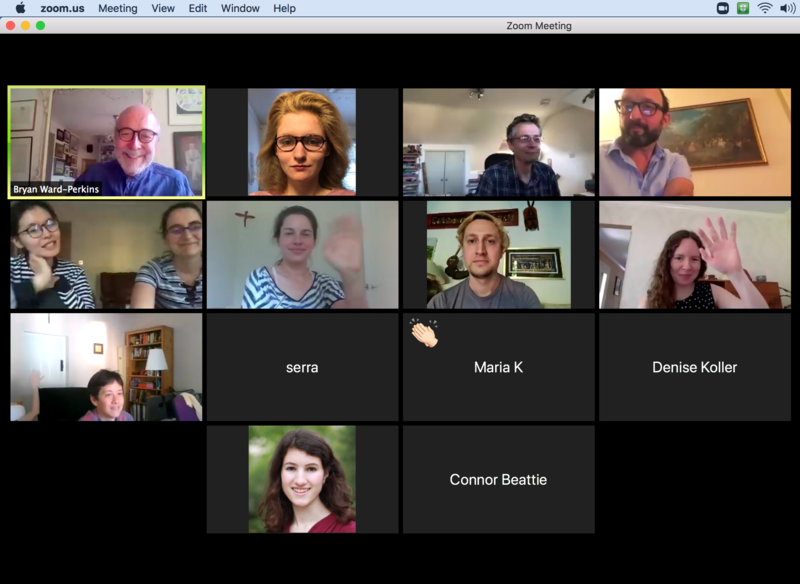Is it really the Ertegun experience if you don’t visit at least one museum per term? This is the existential question we faced when the United Kingdom entered lockdown. But what seemed at first a great blow to the Ertegunites was in fact an opportunity, in disguise, to discover a whole new world of cultural enrichment. Overnight, we all became digital humanists.
Museums, archives, and collections around the world have been digitising their collections, and there is no time like the present to take advantage of these extraordinary digital resources.
That’s why I came up with “Night at the Museum.” I issued an invitation to members past and present of the Ertegun community to identify their favourite online collection, and select a few choice pieces to share with us over Zoom. From the comfort of our homes, we travelled to Turkey under the expert eye of Serra Somersan (DPhil, Classical Archaeology) to visit the Antalya Archaeological Museum. The Museum has a developed tour which allows users to “walk through” as though we were really there. We saw amazing statues, including my favourite, of a dancer whose stone skirts carried notes of music from thousands of years ago. Serra even drew our attention to the sarcophagus of the dog Stephanos, proving that people in all times and places have loved dogs.
The Sarcophagus of Stephanos the dog, presented by Serra Somersan and organiser, Lena Zlock
Following the tour, we opened the floor for a Q&A, which began with a great discussion about the ways in which digital tools like this virtual museum will impact traditional tour-guiding and museum visits. Alumna Emily Cox pointed out that these resources allow us to rethink the traditional, “linear” museum experience.
We were lucky to host a second Night at the Museum in June with Emeritus Director Bryan Ward-Perkins, who showed us “a (very) few favourite things” in the British Library. Bryan’s tour was diverse in scope and eye-opening in its details. We learned about symbolism behind the fresco of Ashurbanipal’s lion hunt, and all felt quite sorry for the lions by the end. My favourite object was the pin found at the Sutton Hoo burial site. At first sight, it appears to be a beautiful mosaic of colourful tiles. But on closer inspection, Bryan showed us that these nearly microscopic pieces of glass represented a boar’s head. These immaculate details testify to the craftsmanship of the Anglo-Saxons, and that beauty is held in the eye of the enlightened beholder. As Bryan pointed out, with these digital platforms, we can see objects closer than ever before!

These two events showed the power of the digital to enhance our experience and understanding of cultural heritage. Even though we turned to these tools out of necessity, my hope is that scholars will recognise their value beyond the COVID pandemic, and will use them in their learning and research going forward.
Lena Zlock